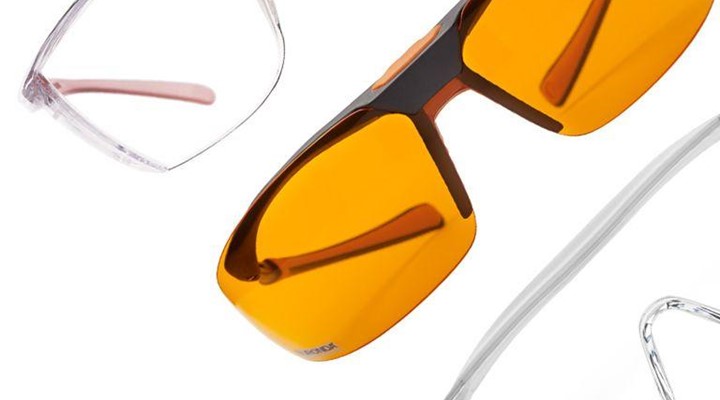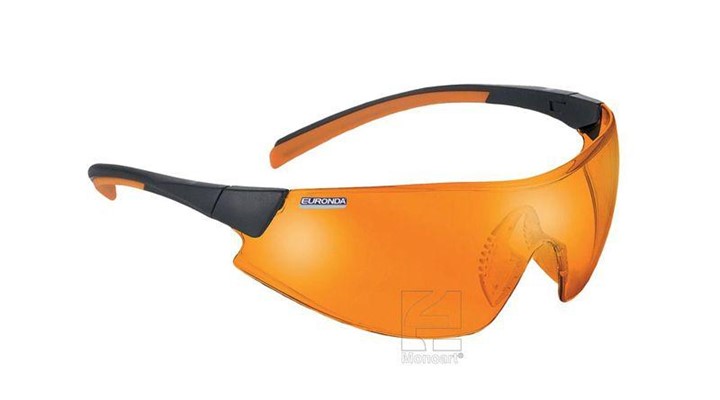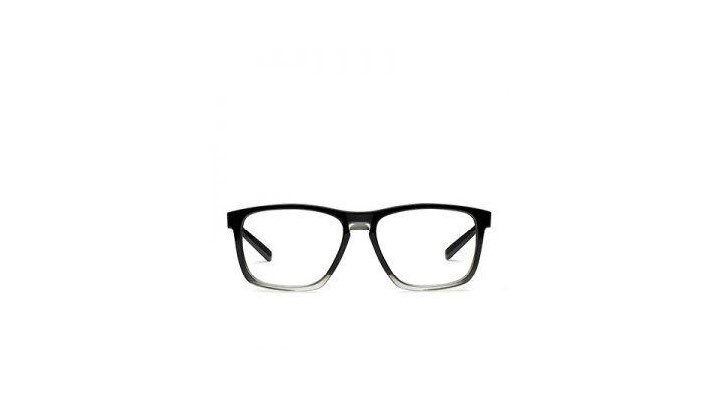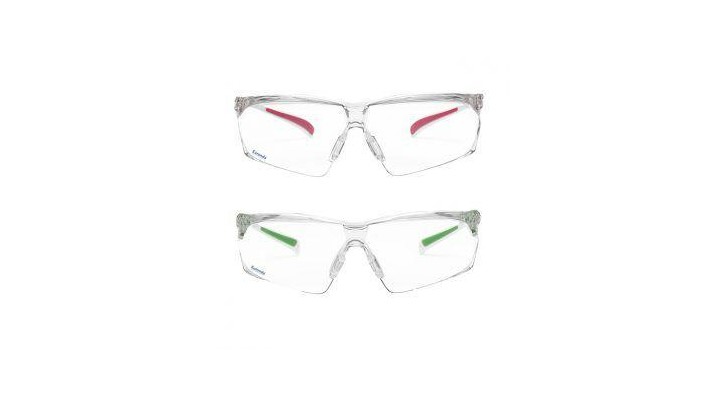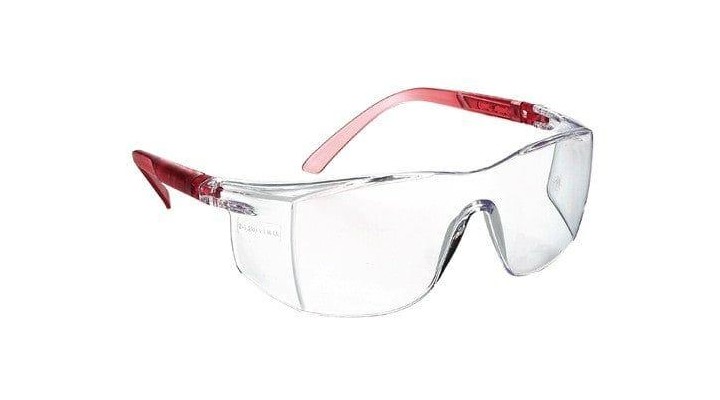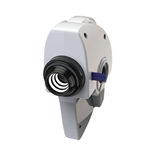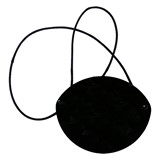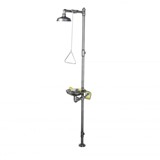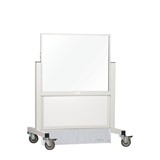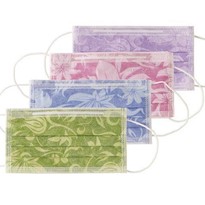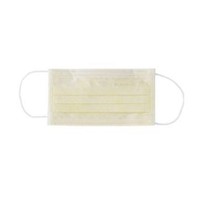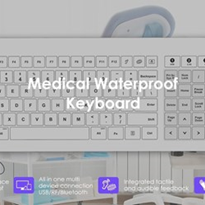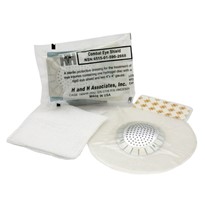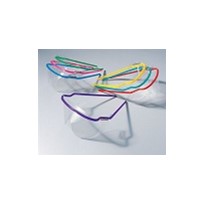The work carried out in healthcare practices exposes operators to continuous risks related to physical, chemical and biological agents.
The eye area is particularly sensitive to physical and chemical trauma and represents an open wound for biological agents.
Often eye injuries are not a cause for concern, but in some cases, they can lead to a limitation of the field of vision and even complete loss of vision, which is why eye protection in dentistry is an extremely important issue.
Before the 1980s, eye protection devices were very rarely used. It took the spread of human immunodeficiency virus (HIV) to raise awareness of the biological risks associated with unprotected conjunctiva.
Farrier et al. [1], after studying a sample of 200 dentists, found that 87% of them usually wear glasses, that 48% suffered some trauma or eye infection and that in 75% of those cases, such accidents occurred because they were not wearing eye protection.
The percentage of assistants wearing glasses is even lower (48%).
It is our duty to wear Personal Protective Equipment (PPE) in order to avoid any kind of accident [2].
We must protect not only ourselves, but also our patients: during treatment, we bring various sharp instruments (scalpels, needles, probes, etc.) close to their faces, and use acids and alkalis that can easily end up inside their eyes.
In addition, the use of protective glasses should not be limited exclusively to moments when you have a patient in front of you.
The percentage of professionals wearing glasses while handling contaminated instruments in the sterilization room is significantly lower still, despite the fact that handling of this material involves a real risk of biological contamination.
Eye lesions
Working without eye protection means exposing yourself to several possible eye lesions. To simplify, they could be classified into two different groups:
- Physical injuries:
- Impact trauma
- Chemical Trauma
- Radiation trauma
- Infectious lesions:
- Localised infections
- Systemic infections
Impact trauma
The most frequent injuries are usually due to abrasions produced by the impact of objects or metals during dental treatment: they usually heal on their own without the need for treatment, although they can give rise to secondary infections.
These are followed by bleeding injuries caused by instruments capable of producing cuts or lacerations, or by the impact of a penetrating object; they cause pain, bleeding, alteration of the visual field and require professional suturing. They can cause loss of vision or leave after-effects such as cataracts, pupil distortion or uveitis.
Chemical Trauma
Mainly caused by acids and alkalis that come into contact with the eye, it can cause conjunctivitis, keratopathies and surface marks.
Treatment requires abundant irrigation to remove the remains of the causative agent, the use of lubricants, corticoids and/or topical antibiotics and vitamin C. Normally it is possible to recover 100% of eye functionality.
Radiation trauma
During dental treatments, we use blue lights for photopolymerisation, or laser.
Blue light has phototoxic effects that can lead to retinitis pigmentosa or macular degeneration. The blue light also contributes to senescence of the retina, the first biomarker of which is the appearance of residual bodies, such as lipofuscin. To prevent this problem, orange filters are used to block these harmful effects [3].
The widespread use of laser equipment in dental clinics has contributed significantly to the increase in injuries to the conjunctiva, due to inadequate use of protective devices. In addition, the accumulation of tissue debris on the tip of the laser causes the formation of gases which, when heated, can cause burns.
The eye also absorbs UV and UV-B spectrum radiation, which can cause cataracts, retinitis or even eye cancer. The use of specific protective glasses is necessary for both the patient and the operator [4].
Infectious lesions
The procedures performed during dental treatment generate aerosols that can settle on the surface of our eyes. The eye is an ¨open wound¨ through which pathogens can penetrate, causing localised or systemic infections.
Localised infections
“Localised infections” are those that directly affect the eye due to aerosol contamination or trauma-related infections.
Wilcox et al. [5] found a higher risk of herpetic keratitis in contact lenses wearing patients who were not wearing glasses.
Afzha et al. [6], in a study of contact lenses wearing dentists, found that after scaling and planing of the roots, only 50% of the lenses were contaminated when eye protection was worn, as compared to 100% when no safety equipment was used.
Systemic infections
Accidents often occur in dentistry resulting in direct fluid contact with the conjunctiva. Although the risk of seroconversion is low, eye protection should never be neglected.
Seroconversion cases have been reported involving several pathogens, such as HIV, HBB and HBC. Viruses such as Influenza or the current Coronavirus are also transmitted through the conjunctiva. The risk of seroconversion to HBB is 01%; for HIV there is no effective evidence, while the risk of contracting hepatitis C through the conjunctiva is very rare, although there is a case of a nurse in a dialysis ward who is reported to have contracted HBC [7].
The use of protective shields allows for other types of glasses to be worn, increasing the level of protection. Such measures not only avoid contamination from splashes that can directly reach the eye, but also, by protecting most of the face, prevent staff from self-contamination by touching the face [8].
- Farrier, S., Farrier, J. & Gilmour, A. Eye safety in operative dentistry — A study in general dental practice. Br Dent J200, 218–223 (2006). https://doi.org/10.1038/sj.bdj.4813257
- Ayatollahi J, Ayatollahi F, Ardekani AM, Bahrololoomi R, Ayatollahi J, Ayatollahi A, Owlia MB. Occupational hazards to dental staff. Dent Res J (Isfahan) 2012;9(1):2–7. doi: 10.4103/1735-3327.92919
- Yoshino F, Yoshida A. Effects of blue-light irradiation during dental treatment. Jpn Dent Sci Rev. 2018;54(4):160–168. doi:10.1016/j.jdsr.2018.06.002
- Ekmekcioglu H, Unur M. Eye-related trauma and infection in dentistry. J Istanb Univ Fac Dent. 2017;51(3):55–63. Published 2017 Oct 2. doi:10.17096/jiufd.60117
- Willcox MDP, Holden BA . Contact lenses related corneal infections. Bioscience Reports2001; 21: 445–461.
- Afzha R, Chatterjee A, Subbaiah SK, Pradeep AR. Microbial contamination of contact lenses after scaling and root planing using ultrasonic scalers with and without protective eyewear: A clinical and microbiological study. J Indian Soc Periodontol. 2016;20(3):273–278
- Hosoglu S, Celen MK, Akalin S, Geyik MF, Soyoral Y, Kara IH. Transmission of hepatitis C by blood splash into conjunctiva in a nurse. Am J Infect Control. 2003;31(8):502–504. doi:10.1016/j.ajic.2003.03.005
- Bentley CD, Burkhart NW, Crawford JJ. Evaluating spatter and aerosol contamination during dental procedures. J Am Dent Assoc. 1994;125:579–584
Article by Dr. Gema Maeso, specialist in preventive and community dentistry. European Board in periodontics certified.
For more information and pricing on Euronda Monoart safety glasss, contact the ICONA team on 1300 442 662


